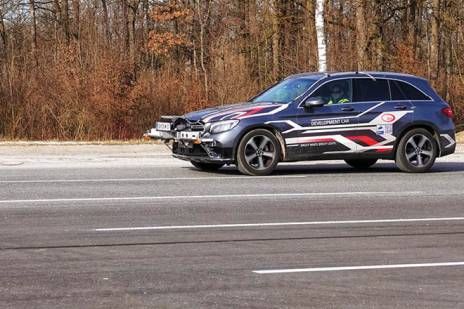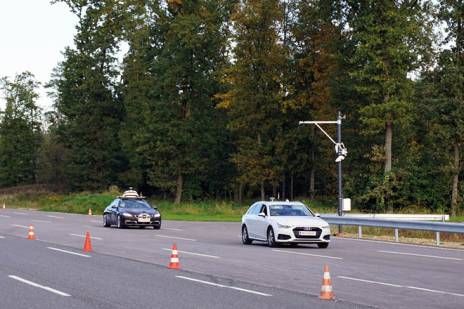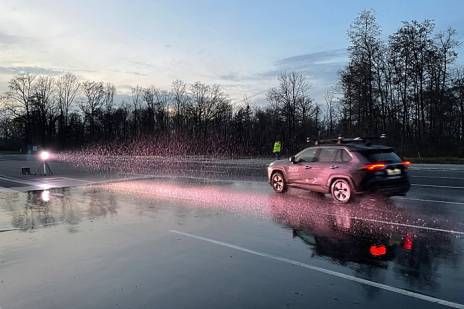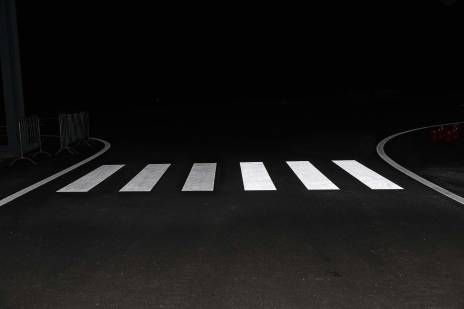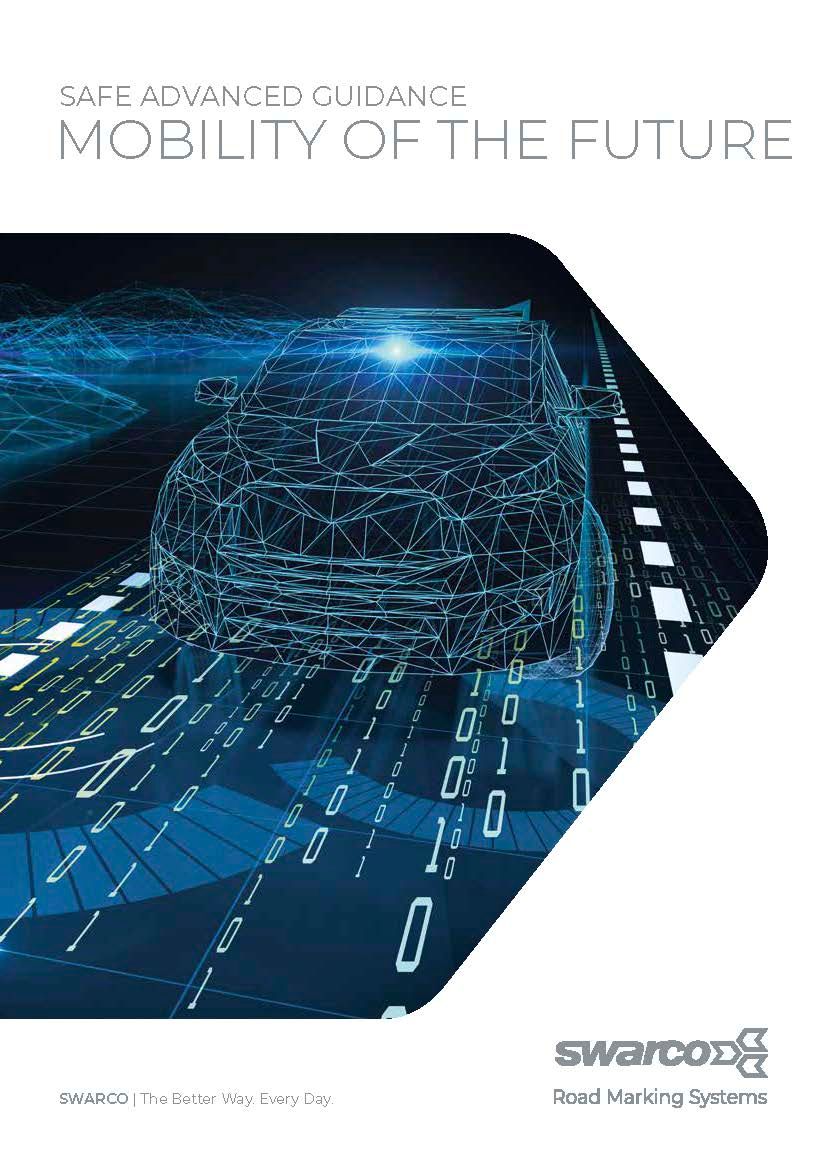Automated Mobility
Guiding the Way for Humans and Machines
Modern lane markings improve road safety significantly, saving human lives.
SWARCO Road Marking Systems provides road users with optimal orientation in every situation thanks to innovative markings.

„Uniform and well-maintained road markings are one key to pave the way for automated driving. They define the road and become the reading elements for cameras and Lidar to ensure safe and well guided travel in automated and connected vehicles.“
Harald Mosböck, VP Region Europe/APMEA (Sales/Contracting),
SWARCO Road Marking Systems
Guiding the Way
global efforts | cooperation partners | projects at a glance | scientific publications | videos | news | downloads
The Benefits of Automated Mobility
With autonomous vehicles, humans will gradually become passengers in their own car, which means more time and freedom for other activities during each drive.
The implementation of intelligent control systems in cars also reduces fuel consumption and emissions, making transport cleaner. And it increases road safety, reduces the risk of accidents, and improves traffic flow.


Modern technology offers insecure drivers and elderly road users access to individual mobility. Smart roads serve as guidance systems for safe transport, in all weather conditions, day and night. Furthermore, the development of connected driving in private transport creates new jobs. With its lane markings, SWARCO Road Marking Systems is part of this development towards a new mobility of the future for humankind.

Autonomous Cars Step by Step

In the future, the possibility of having access to autonomous driving will be open to everyone. It will always be available and safe, day and night.
This will be a gradual transition. And with each step in autonomous driving levels, drivers will have more time, be safer and better protect the environment.
Global Efforts for
Reliable Road Markings
CAV (Connected and Automated Vehicles) refers to a new phase of road transport, which enables self-driving cars. Connected vehicles need road markings to determine their position. Global efforts for reliable road markings are aiming towards guiding the way for humans and machines.
At the request of the European Council, the European Commission has introduced that road markings and traffic signs shall be designed and maintained in such a way that they can be properly recognized both by human drivers and by autonomous vehicles.
The European Union Road Federation (ERF) is recommending certain minimum standards for road markings, emphasizing their width and retroreflective quality. The proposed 150 x 150 formula plays a crucial role in sustainably increasing road safety. It recommends a line width of 150 mm and 150 mcd/m²*lx of retroreflection (in dry weather) as minimum features of markings. In wet conditions, the recommended retroreflection value is 35 mcd/m²*lx.
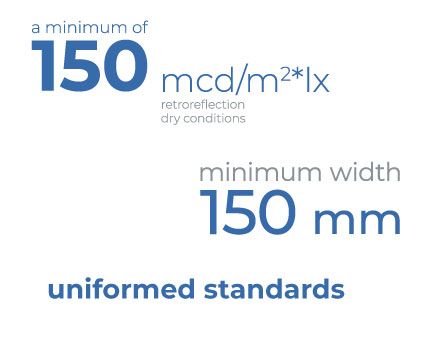
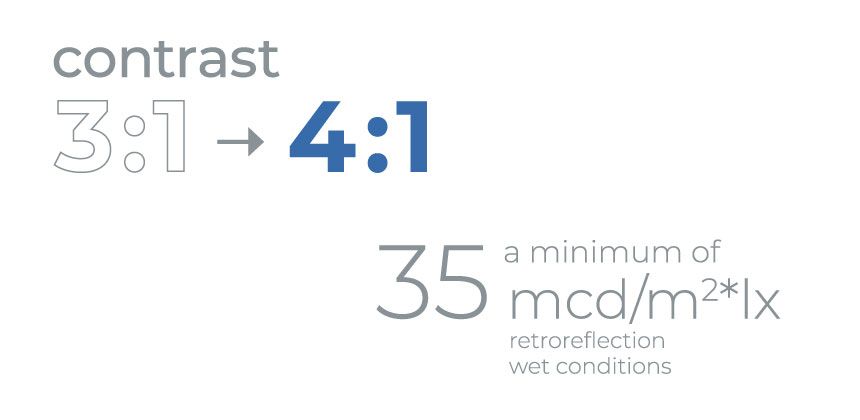
The contrast between markings and road surface should be 3:1, or even better, 4:1. Furthermore, the ERF recommends uniformed standards across different countries.
In North America, the FHWA (Federal Highway Administration) is currently leading the process to analyze all comments on the 11th Edition of the MUTCD (Manual on Uniform Traffic Control Devices for Streets and Highways) which requires a minimum width of 150 mm for road markings and the use of standardized markings.
Japan starts joint research with private sector companies regarding management standards for lane markings needed to ensure that they can be detected by vehicle on-board sensors and that automated driving vehicles stay within lanes.
In Australia and New Zealand, Austroroads (collective of the Australian and New Zealand transport agencies) is supporting the standard of harmonisation of road markings, particularly line width and retroreflectivity, to consider the needs of machine vision and lane guidance functions.
The Chinese Ministry of Transport plans to adapt general technical specifications for highway auxiliary facilities adapted to automated driving. This means consistent standards for markings and regular maintenance of the markings, similar to North America.
Chinese Government included in the 14th Five-Year-Plan to develop autonomous driving and vehicle-road collaboration travel services as well as V2X pilot zones on a national level, accelerating the construction of intelligent connected vehicle road infrastructure. The 2035 target is to operate various connected vehicles with highly automated driving capabilities across vast areas of China.
Road markings by SWARCO Road Marking Systems already reach retroreflection values of up to 1000 mcd/m²*lx (dry), and provide improved values in wet night conditions.
Cooperation Partners
Projects at a Glance
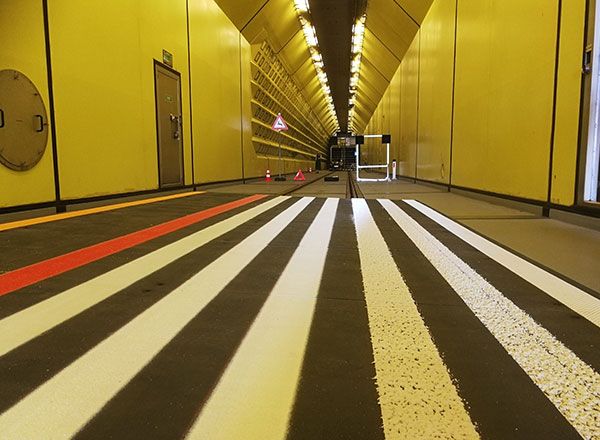
Visibility of various road markings for machine vision
Project with ZKW
Detection of 8 different road marking systems from low to high performance in wind tunnel (Vienna, AT)
3 different cameras from different manufacturers
8 LiDAR sensors from different manufacturers
24 different simulations of weather conditions
In total 144 test scenarios in the largest wind-climate-tunnel worldwide
Result: During rain and during fog, use of the ‘premium’ glass beads resulted in significantly improved camera contrast ratio.

Field Study: Influencing parameters for machine detectability of road markings
Research project with University Aachen (RWTH/ISAC)
Detection of road marking via camera and LiDAR on highway BAB 27 in the area of Bremen (Germany)
Result: While both contrast (camera and LiDAR) and edge intensity (camera) are high at night and in dry conditions, only the edge intensity reaches com-parable values at daytime, diffuse illumination, and dry conditions. At night and wetness the contrast in the camera image supersedes the edge intensity, while the contrast in the LiDAR point cloud deteriorates compared to dry conditions.

ADAS cooperation with Digitrans
Exclusive cooperation partner for roadmarkings at test center for automateddriving in St. Valentin (Austria)
Providing of different permanent and temporary road marking systems to simulate premium and standard qualities
Digitrans test center enables automotive suppliers, OEMs and developers to test classic proving ground elements combined with digital infrastructure (C-ITS / 5G) in different weather conditions

Detection of road markings by AV
Project with JKU
Reference tests of Automated Vehicle (AV) at Digitrans test center in St. Valentin (Austria) in good weather conditions
Set of tests will follow within the next months to test machine vision of AV during different bad weather conditions (rain, fog, snow, etc.)
Goal is to prove that high-performance road marking systems enable autonomous driving in different weather conditions
Result: work in progress
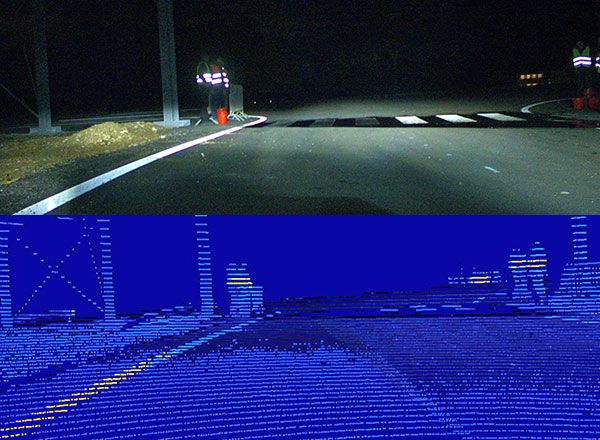
Visibility of different pedestrian crossings for machine vision
Project with ZKW
Detection test of pedestrian crossing (Zebra crossing) via camera and LiDAR during night and wet conditions at Digitrans test center in St. Valentin (Austria)
Result: High-performance road marking systems (structured marking with premium glass bead) increases the road safety for human drivers and autonomous vehicles via increased contrast in various conditions
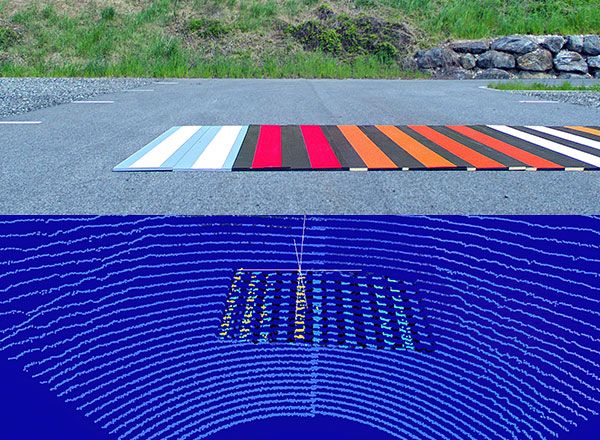
Detection of colored road markings by machine vision
Project with ZKW
Measurements of different colored road marking systems via camera and LiDAR at ZKW test areal
Based on results of wind-tunnel-tests: Goal is to analyze the detection of orange road marking systems – are different glass beads and color pigments influencing detection via LiDAR
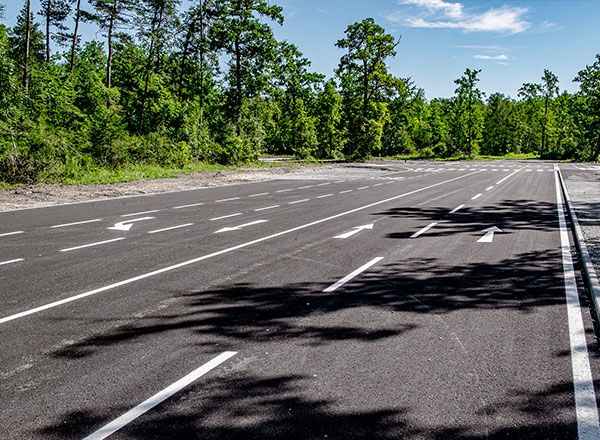
ADAS cooperation with Digitrans (City Zone)
Providing of different permanent and temporary road marking systems to simulate premium and standard qualities within a city zone
Digitrans test center enables automotive suppliers, OEMs and developers to test classic proving ground elements combined with digital infrastructure (C-ITS / 5G) in different weather conditions
Scientific Publications
Visibility of flat line and structured road markings for machine vision
Visibility of various road markings for machine vision
Horizontal Road Markings for human and machine vision
Horizontal road markings and autonomous driving - back from the future
Have a look at all our publications >>







